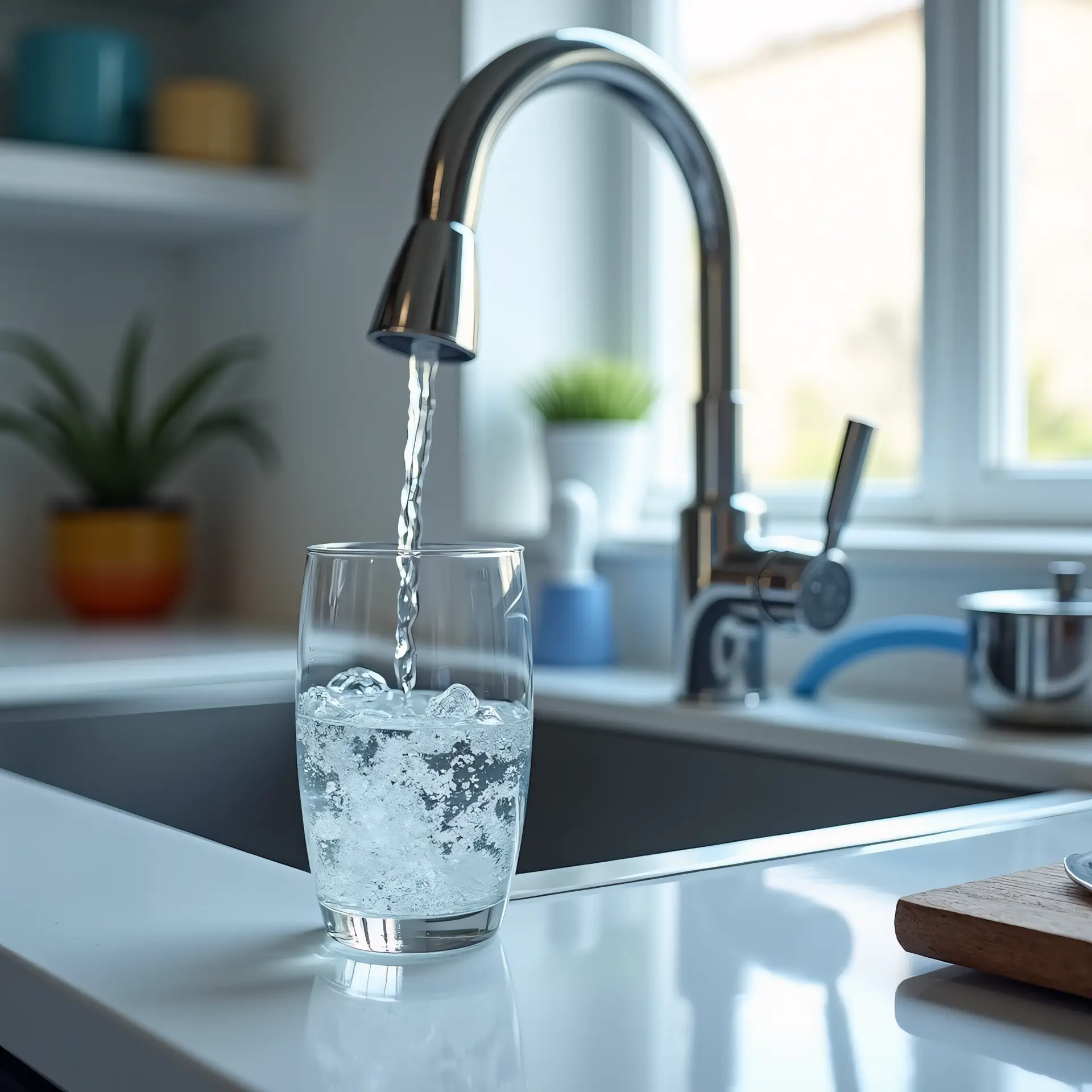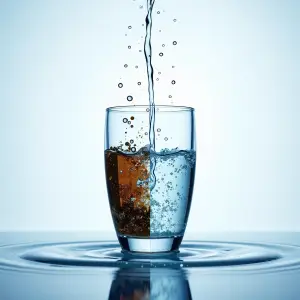estimated reading time: 11 minutes
RO Water: The Ultimate Guide to Reverse Osmosis for a Healthier Home
Nearly 63% of households in the United States are now considering or have already invested in a home water filtration system. But with so many options available, navigating the world of water purification can feel overwhelming. If you’re seeking truly pure and great-tasting water, one technology consistently rises to the top: reverse osmosis (RO). This increasingly popular method isn’t just about removing unpleasant tastes or odors – it’s about safeguarding your family’s health by stripping water of a vast array of contaminants.
RO water is produced through a highly effective filtration process that delivers water of exceptional purity. But is it right for your home? This comprehensive guide will demystify RO purifiers, exploring how they function, the incredible benefits of drinking RO-filtered water, addressing common concerns about mineral loss and waste, and helping you choose the perfect system for your needs and budget.
We’ll dive deep into the science behind the RO process, examining the multi-stage filtration that eliminates everything from lead and arsenic to bacteria and “forever chemicals” like PFAS. Beyond the technical aspects, we’ll dissect the practical considerations: weighing the costs, understanding the maintenance requirements, and comparing RO to other popular filtration options.
Here’s a roadmap of what we’ll cover:
- Decoding Reverse Osmosis: A clear explanation of how an RO purifier works, stage by stage.
- The Comprehensive Benefits of RO Water: From improved taste to profound health advantages.
- Is RO Water Safe? Addressing common myths and concerns.
- Choosing the Right RO Purifier for Your Home: Under-sink, whole-house, and beyond – finding the perfect fit.
- RO Water Purifier Price: What to expect, and what impacts the cost.
- RO Water Purifier Maintenance: Extending the life of your system.
- RO vs. Other Water Filtration Methods: A head-to-head comparison.
If you’re a homeowner concerned about the quality of your drinking water and seeking a reliable, effective solution, then you’ve come to the right place. Let’s embark on a journey to understand everything you need to know about reverse osmosis and unlock the potential of truly clean, healthy water for your home.
Decoding Reverse Osmosis: How RO Purifiers Deliver Exceptionally Pure Water
Nearly 63% of US households are actively seeking better water quality, and for good reason. Concerns about contaminants, taste, and overall health are driving this demand. While a multitude of water filtration systems exist, reverse osmosis (RO) consistently stands out as a leading solution for achieving truly purified water. But what is reverse osmosis, and how does it work its magic? Let’s break down the process, stage by stage, to demystify this powerful technology.
At its core, reverse osmosis is a pressure-driven process that forces water through a semi-permeable membrane. This membrane is the key – it’s designed to allow water molecules to pass through, while blocking the vast majority of contaminants. However, it’s rarely a single-step process. Most RO purifiers utilize a multi-stage filtration system, each stage targeting different types of impurities. Here’s a typical breakdown:
- Sediment Filter: This is the first line of defense. It removes larger particles like sand, silt, rust, and dirt. Think of it as a pre-filter, protecting the more delicate components downstream. Without this stage, these larger particles could quickly clog the RO membrane, reducing its efficiency and lifespan.
- Carbon Filter(s): Typically, an RO system will include two carbon filters. The first, often a granular activated carbon (GAC) filter, removes chlorine, chloramine, volatile organic compounds (VOCs), and other substances that affect taste and odor. Chlorine, commonly used to disinfect municipal water supplies, can create unpleasant byproducts. The second carbon filter, often a carbon block filter, further refines the water, removing even smaller particles and improving taste.
-
Reverse Osmosis Membrane: This is the heart of the system. Under water pressure (typically from your home’s water supply), water is forced against the RO membrane. Pure water passes through, while contaminants are blocked and flushed away. This membrane is incredibly effective at removing a wide range of impurities, including:
- Heavy Metals: Lead, arsenic, mercury
- Dissolved Solids: Minerals, salts
- Microorganisms: Bacteria, viruses, cysts
- “Forever Chemicals” (PFAS): Per- and polyfluoroalkyl substances, increasingly found in water supplies.
- Other Contaminants: Pesticides, herbicides, pharmaceuticals
- Post-Carbon Filter (Polishing Filter): After passing through the RO membrane, water goes through a final carbon filter. This “polishing” filter removes any remaining trace tastes or odors, ensuring the water is exceptionally clean and refreshing.
- Mineral Filter (Optional): Some RO systems include a remineralization stage. This adds beneficial minerals like calcium and magnesium back into the water. We’ll discuss the debate around mineral loss later, but this stage addresses those concerns for those who prefer a mineral-rich taste.
The Comprehensive Benefits of RO Water
The Comprehensive Benefits of RO Water extend far beyond just improved taste. Drinking RO water offers a range of health advantages:
- Reduced Exposure to Harmful Contaminants: The most significant benefit. By removing lead, arsenic, and other toxins, RO water protects your family from potential health risks.
- Improved Hydration: Pure water is more readily absorbed by the body, leading to better hydration.
- Better-Tasting Beverages: Coffee, tea, and juice all taste better when made with purified water.
- Healthier Cooking: Using RO water in cooking enhances the flavor of your food.
- Protection for Appliances: RO water reduces scale buildup in appliances like coffee makers and humidifiers, extending their lifespan.
Is RO Water Safe? Addressing Concerns
Is RO Water Safe? A common concern revolves around the removal of beneficial minerals. While it’s true that RO systems remove minerals, a balanced diet is the primary source of these essential nutrients, not drinking water. Furthermore, as mentioned, many systems now include a remineralization stage. Another concern is water waste. Traditional RO systems do produce wastewater as part of the filtration process. However, newer, more efficient systems significantly reduce this waste, with some boasting waste ratios as low as 1:1 (meaning for every gallon of purified water, only one gallon is wasted).
Choosing the Right RO Purifier for Your Home
Choosing the right RO purifier depends on your specific needs and budget. Here’s a quick overview:
- Under-Sink RO Systems: The most common type, installed under your kitchen sink. They provide purified water on demand through a dedicated faucet. Check out Under-Sink RO Systems on Amazon
- Whole-House RO Systems: Filter all the water entering your home. More expensive and complex to install, but provide purified water for all uses.
- Countertop RO Systems: Portable and easy to install, but typically have smaller storage tanks. Check out wide range of ROs on Amazon
RO Water Purifier Price: What to Expect
The cost of an RO water filtration system can vary widely, depending on the type, features, and brand. Under-sink systems typically range from $200 to $600, while whole-house systems can cost anywhere from $1,000 to $5,000 or more including installation. Factors impacting the price include the number of filtration stages, the quality of the RO membrane, and added features like remineralization or UV sterilization. Don’t forget to factor in the cost of RO filter replacement, which is an ongoing expense.
RO Water Purifier Maintenance: Extending System Lifespan
Regular maintenance is crucial for ensuring your RO system continues to deliver clean, safe water. This primarily involves timely RO filter replacement. Sediment and carbon filters should be replaced every 6-12 months, while the RO membrane typically lasts 2-5 years. Following the manufacturer’s recommendations for filter replacement is essential. Periodically check for leaks and ensure your system is properly sanitized. A well-maintained system will provide years of reliable performance and save you money in the long run.
RO vs. Other Water Filtration Methods
RO water purification stands out compared to other common methods:
- Carbon Filtration: Effective for taste and odor, but doesn’t remove dissolved solids or heavy metals.
- UV Filtration: Kills bacteria and viruses but doesn’t remove other contaminants.
- Water Softeners: Address hard water minerals but don’t purify the water.
- Pitcher Filters: Convenient but have limited capacity and filtration power.
RO systems offer the most comprehensive filtration, removing a wider range of contaminants than any other method. However, they are generally more expensive and require more maintenance.
Frequently Asked Questions About Reverse Osmosis (RO)
Q1: What exactly *is* Reverse Osmosis water filtration, and how does it differ from a standard water filter?
Reverse Osmosis (RO) is a sophisticated water purification process using pressure to force water molecules through a semi-permeable membrane. Unlike typical water filters that simply trap sediment, RO removes dissolved inorganic solids, like salts, metals, and even some microorganisms. This results in exceptionally pure water – significantly cleaner than traditionally filtered options and ideal for drinking & cooking.
Q2: What contaminants can a Reverse Osmosis system effectively remove from my tap water?
An RO system tackles a broad spectrum of contaminants! Beyond sediment, you can expect effective removal of lead, arsenic, fluoride, chlorine, nitrates, and total dissolved solids (TDS). Importantly, RO significantly impacts water taste by removing impurities that cause unpleasant odors. Regularly replacing RO filters ensures optimal contaminant reduction.
Q3: Is water produced by Reverse Osmosis truly healthy? Doesn’t it strip beneficial minerals?
While RO water does remove minerals, this doesn’t automatically equate to unhealthy. Most people obtain crucial minerals from their diet, not solely from water. Some RO systems now include remineralization stages to add healthy minerals back in. Focusing on water quality and contaminant removal is paramount, and RO excels here.
Q4: How often do I need to change the filters in my Reverse Osmosis system, and what’s involved in filter replacement?
Typical RO filter replacement schedules vary, but generally include pre-filters every 6-12 months, the RO membrane every 2-5 years, and post-filters every 6-12 months. Replacement is usually straightforward, involving shutting off the water supply and twisting off the old filters – detailed instructions come with your specific RO system installation.
Q5: What’s the difference between a whole-house RO system and an under-sink RO system? Which is best for me?
Under-sink RO systems treat water specifically for drinking and cooking, usually dispensing from a dedicated faucet. Whole-house RO systems, conversely, purify all the water entering your home, offering comprehensive protection. Choosing depends on your needs; under-sink is cost-effective for potable water, whole-house addresses concerns about showering/laundry water too.
Q6: Is Reverse Osmosis water filtration wasteful, as it produces wastewater?
It’s true that RO systems produce wastewater during the filtration process. However, modern, efficient RO systems have dramatically improved, with ratios now often around 1:1 (1 gallon wastewater for 1 gallon purified). Look for systems with higher efficiency ratings to minimize water waste while enjoying clean water.
Beyond the Filter: Securing Your Water, Securing Your Health
We’ve journeyed through the world of reverse osmosis (RO) water purification, dismantling the science behind it, weighing its impressive benefits against legitimate concerns, and navigating the often-confusing landscape of system selection. From understanding how RO systems meticulously filter out contaminants – down to the molecular level – to recognizing the importance of remineralization and proper maintenance, we’ve covered a lot of ground.
We’ve established that RO isn’t just about removing bad stuff; it’s about achieving a level of water purity that can significantly impact your health and wellbeing. While concerns about mineral depletion are valid, readily available remineralization cartridges offer a simple and effective solution. And while initial costs can seem higher than other filtration methods, the long-term benefits – both to your health and potentially to your plumbing – often outweigh the investment.
Looking ahead, the demand for advanced water purification solutions will only increase. Emerging contaminants, like PFAS (“forever chemicals”), are driving innovation in RO membrane technology, leading to even more effective and specialized systems. We’re also seeing a rise in “smart” RO systems with automated monitoring, filter life tracking, and even app-based control. Expect to see further integration of UV sterilization and other advanced technologies to create truly comprehensive water purification solutions.
Now that you’re armed with this knowledge, it’s time to take action! Don’t settle for questionable water quality. Ready to ditch the bottled water and experience truly pure hydration? Check out our picks for the best RO systems and start enjoying cleaner, healthier water today! [Link to Best RO Systems] Want to dive deeper? Check out our blog post on Kent, Aquaguard , Gravity filters and Livpure Or, still unsure of filter system right you, check out our blogs on A Comprehensive Guide to Water Purification



